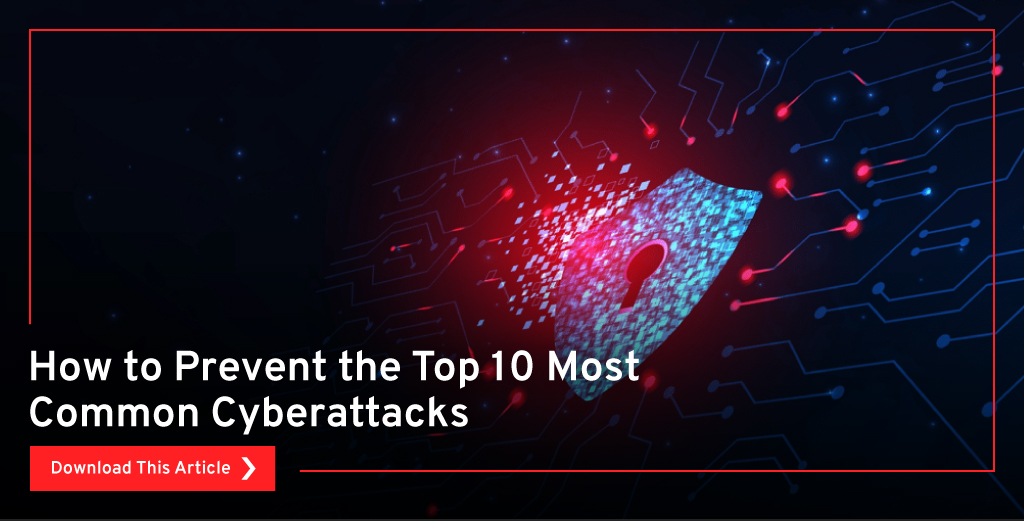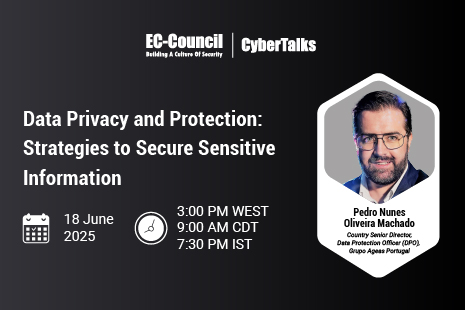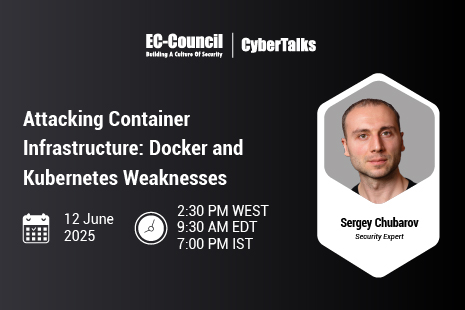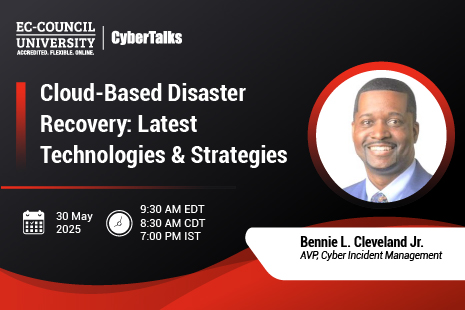How to Prevent the Top 10 Most Common Cyberattacks
| Shelby Vankirk |
Cybersecurity is a pressing concern for businesses and individuals alike. With incidents like the Equifax breach making headlines, it’s clear that businesses and organizations must stay vigilant about online security.
Whether you want to beef up your cybersecurity skills or are responsible for safeguarding your organization’s networks, you need to know the most common cyberattacks and how to prevent them.
1. Phishing Attacks
Phishing attacks are one of the most common cyberattacks. According to Deloitte, approximately 91% of all cyberattacks start with a phishing email (Deloitte, 2020).
Phishing is a cyberattack that uses email or malicious websites to steal sensitive information, such as login credentials, credit card numbers, or account numbers. Attackers often pose as legitimate companies or individuals to trick victims into giving up this information.
There are many ways to prevent phishing attacks. Some of the most common methods include:
- Educating yourself and your employees about phishing attacks.
- Exercising caution with unsolicited emails, even if they appear to be from a trusted source; do not click on links or open attachments from unknown senders.
- Verifying the authenticity of websites before entering sensitive information.
- Using strong passwords and avoiding reused passwords for different accounts.
- Implementing two-factor authentication where possible.
- Keeping your software and antivirus programs up to date.
2. Malware Attacks
In this 2022 Data Breach Investigations Report, Verizon states that 30% of data breach cases involve some type of malware (Verizon, 2022). Malware is a type of malicious code or software used to disrupt computer systems, steal data, or gain unauthorized access to a network. Common types of malware include viruses, worms, Trojan horses, ransomware, and spyware.
Preventing malware attacks requires a multilayered approach that includes:
- Technical controls, such as installing and maintaining antivirus and antimalware software.
- Nontechnical measures such as training employees on cybersecurity awareness and best practices as well as developing and enforcing strong security policies.
3. SQL Injection Attacks
SQL injection attacks occur when an attacker inserts malicious code into a web application to extract sensitive information from the database. The attacker can then use this information to gain access to the system or launch further attacks.
Some of the most common cyberattack strategies to prevent SQL injection include:
- Performing input validation to ensure all user input does not contain any malicious code.
- Configuring database permissions carefully to prevent unauthorized access to sensitive data.
- Using parameterized queries to avoid SQL injection vulnerabilities.
- Implementing security controls such as firewalls and intrusion detection systems.
4. Session Hijacking Attacks
Another common cyberattack, session hijacking, occurs when a hacker takes over a legitimate user’s session, usually by stealing the user’s cookies or session ID. Session hijacking attacks can be difficult to prevent, as they often exploit vulnerabilities at the network or application level.
Here are some steps you can take to reduce the risk of being hijacked:
- Put strong authentication methods in place, such as two-factor authentication.
- Use a VPN or other encryption method to protect your session data.
- Be wary of public Wi-Fi, and only connect to trusted networks.
- Keep your software and operating system up to date.
- Invest in a security solution that can detect and block session hijacking attempts.
5. DDoS Attacks
A distributed denial-of-service (DDoS) attack is a cyberattack in which multiple systems flood a target system with internet traffic, requests for information, or other data. The goal of a DDoS attack is to overload the target system so that it no longer functions properly or is unavailable to legitimate users.
Botnets often carry out DDoS attacks. These botnets are collections of infected computers controlled by an attacker (Brookes, 2022). The attacker will use them to send large amounts of traffic and data to the target system.
There are many ways to prevent DDoS attacks, including:
- Employing a DDoS protection service.
- Implementing rate limiting.
- Using a firewall.
- Keeping your system updated.
6. Password Spraying Attacks
Password spraying is a type of cyberattack for which hackers use lists of commonly used passwords to try and gain access to multiple accounts. This type of attack often targets high-profile or unsecured accounts.
Some preventative measures to protect against password spraying are to maintain:
- Strong and unique passwords for all accounts.
- A password manager to keep track of passwords.
- Two-factor authentication whenever possible.
- Security mechanisms against phishing.
- Regular scans for vulnerabilities.
7. OnPath Attacks
In this common cyberattack activity, the attacker intercepts the communications of two victims, relaying messages between them and making them believe they are communicating directly. The attacker can eavesdrop on their conversation or modify the exchanged messages.
To reduce the risk of OnPath attacks:
- Always verify the identity of the person you are communicating with, even if you know them.
- Use encryption when possible and stay on guard against emails from unknown senders or emails that seem suspicious.
8. Ransomware
Ransomware is a type of malware that encrypts a victim’s files and demands a ransom payment to decrypt them. Ransomware attacks often involve phishing emails that contain malicious attachments, calendar invites, or links (CISCO Defense, 2022). Once opened, the attachment or link will download and install the ransomware onto the victim’s computer.
Preventative measures against ransomware include:
- Never opening attachments or clicking on links from unknown or untested sources.
- Keeping your antivirus and antimalware software up to date.
- Having a reliable backup solution in place so that you can recover your files in the event of an attack.
9. AI-Powered Attacks
Common cyberattacks carried out by AI-powered machines are among the most difficult to prevent. AI-powered machines can learn and evolve quickly, making it hard to keep up with their changing methods.
Examples of AI-powered attacks include deepfake videos and phishing attacks that use machine learning to become more realistic and believable (Fortinet, 2022).
Here are a few things you can do that will help to prevent AI-powered attacks:
- Keep your software and systems up to date with the latest security patches.
- Use strong cybersecurity defenses, including antivirus and antispam software, firewalls, and intrusion detection and prevention systems.
- Educate yourself and your associates about the dangers of AI-powered attacks and how to spot them.
10. Zero-Day Attacks
A zero-day attack is a type of cyberattack that exploits previously unknown vulnerabilities in software or hardware (Hendler, 2022). These attacks take advantage of security vulnerabilities that have not yet been patched or made public.
Preventive measures against zero-day attacks include:
- Keeping all software and firmware up to date.
- Using security tools that can detect and block known and unknown threats.
- Segmenting networks to contain the spread of an attack.
Want to Learn More?
Cybersecurity threats are evolving daily, so it’s more important than ever for businesses to be proactive in their defenses. EC-Council provides industry-leading cybersecurity education and certification programs that will equip you with the essential skills in cybersecurity that you need to keep any business safe.
Get certified with EC-Council and join the fight against cybercrime.
References
Brooks, C. (2022, April 22). When botnets attack. Forbes. https://www.forbes.com/sites/chuckbrooks/2022/04/22/when-botnets-attack/?sh=7f19507144df
CISCO. What is ransomware? https://www.cisco.com/c/en/us/solutions/security/ransomware-defense/what-is-ransomware.html
Deloitte. (2020, January 9). 91% of all cyberattacks begin with a phishing email to an unexpected victim. https://www2.deloitte.com/my/en/pages/risk/articles/91-percent-of-all-cyber-attacks-begin-with-a-phishing-email-to-an-unexpected-victim.html
Fortinet. What is deepfake? https://www.fortinet.com/resources/cyberglossary/deepfake
Hendler, R. (2022, June 21). Examining zero-day attacks and how to prevent them. https://www.forbes.com/sites/forbestechcouncil/2022/06/21/examining-zero-day-attacks-and-how-to-prevent-them/?sh=17974f56e0ec
Verizon. (2022). Data breach investigations report. https://www.verizon.com/business/resources/reports/2022/dbir/2022-data-breach-investigations-report-dbir.pdf










